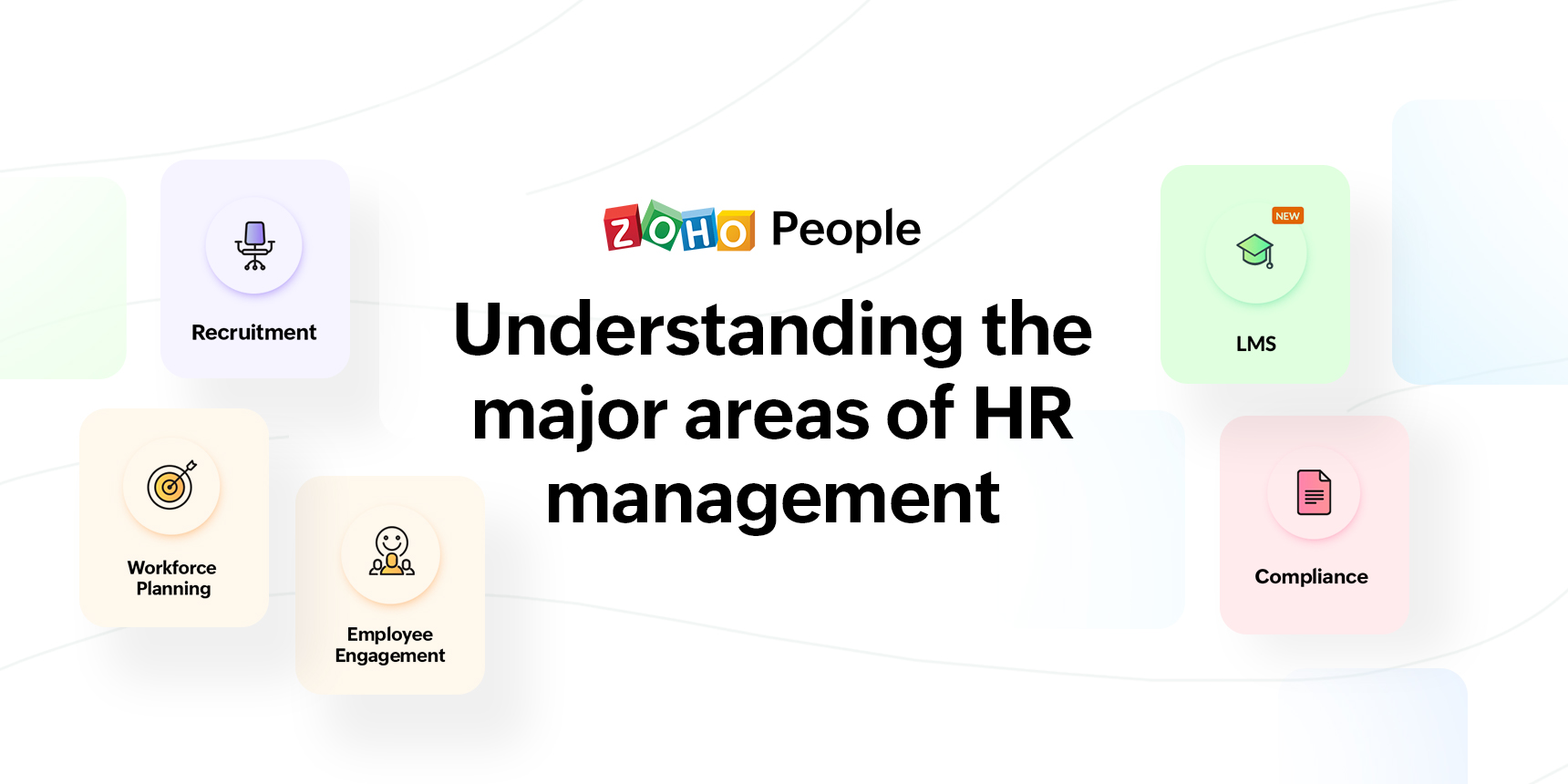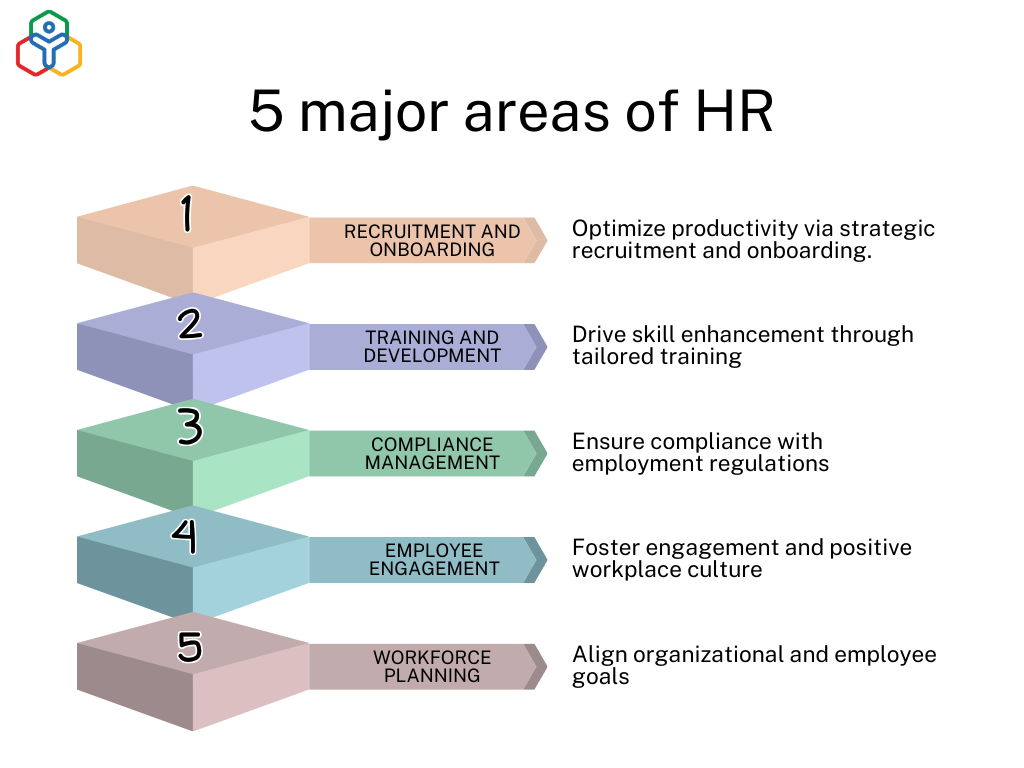- HOME
- HR insights
- What are the five main areas of HR?
What are the five main areas of HR?
- Last Updated : February 28, 2024
- 21.8K Views
- 3 Min Read

Employees are the backbone of any organization. They handle product development, service management, marketing, sales, finance—you name it. If you want to bring out the best in your teams and grow your organization effectively, your employees should be taken care of. That's where HR comes in.
As an HR manager, you help shape an employee's perception of your organization and improve their work experience. Understanding the major aspects of HR management will help you create an environment where your employees thrive and push your organization to new heights. Whether you are a small business trying to improve your HR strategies or an HR professional who's new to the sector, we've got you covered.
The 5 main areas of HR include recruitment and onboarding, training and development, compliance management, employee engagement, and workforce planning. Here's a gist of how HR professionals can ace each area:

Recruitment and onboarding
Recruitment and onboarding are by far the most important areas of HR management. Hiring candidates who align with your organization's culture and values will maximize your productivity and growth. To recruit the right candidates, your HR team must:
Understand the recruitment needs of different departments
Advertise job openings and receive applications
Screen applications and schedule interviews
Conduct multiple rounds of interviews
Perform background checks for selected candidates
Send offer letters and receive confirmations from candidates
Once the recruitment process is over, the onboarding process has to be conducted for new hires. This will allow them to complete any necessary paperwork, train for their roles, and get to know your organization better.
Training and development
The HR department is also responsible for conducting training and development programs to help employees acquire new skills and perform better. Your team can use skill gap analyses to create targeted trainings based on employee needs. Once the courses are finalized, learning goals have to be set, the mode of training (online or offline) should be decided, and the course materials have to be prepared. Upon completion of the training, the HR department should gather feedback from employees and evaluate the effectiveness of the courses.
Compliance management
As you know, staying within compliance often falls to the HR team as they try to ensure that the organization passes audits and avoids huge penalties. The HR department has to be updated on all local and national employment regulations, such as minimum wage laws, worker's compensation laws, anti-discrimination and harassment laws, health insurance regulations, and occupational safety laws. This will help you to draft suitable policies to ensure compliance. In addition, you'll also be expected to conduct frequent compliance audits to make sure your HR processes adhere to the appropriate standards.
Also see:Tips to improve HR compliance
Employee engagement and satisfaction
Keeping employees engaged and improving their relationship with their organization is key. This involves implementing employee-centric strategies to cater to the needs of employees and improve their experience with your organization.
The HR department is actively involved in developing employee recognition and feedback systems, for example, that highlight where employees stand in terms of contribution to organizational growth. Improving employee experience can also involve organizing fun activities that allow employees to relax and have fun at work regularly. Overall, you and your team are at the helm of establishing a positive work environment that upholds transparency and open communication.
Workforce planning
The HR department needs to ensure that the goals and needs of your organization and its employees are consistent. This enables an organization to understand strategize on how to best align your business success and employee development. Try to analyze where your organization stands in terms of meeting future needs, identify any gaps, devise strategic initiatives to overcome these gaps, and implement those initiatives to strengthen organizational success. Poor workforce planning hinders organizational growth and leads to lower employee retention.
The role of the HR department in improving an organization's growth has evolved immensely over time, and it is now involved in nearly every essential aspect of an organization. Without the HR department, your organization would not be able to recruit or retain top talent, especially considering the talent competition prevailing in today's job market.
With Zoho People's HR software, all the HR activities we've mentioned above can be automated and completed online. It handles and simplifies all your HR tasks right from onboarding to resignation, minimizing manual labor and time-consuming administrative work. Learn more about Zoho People.
 Tarika
TarikaContent Specialist at Zoho People


